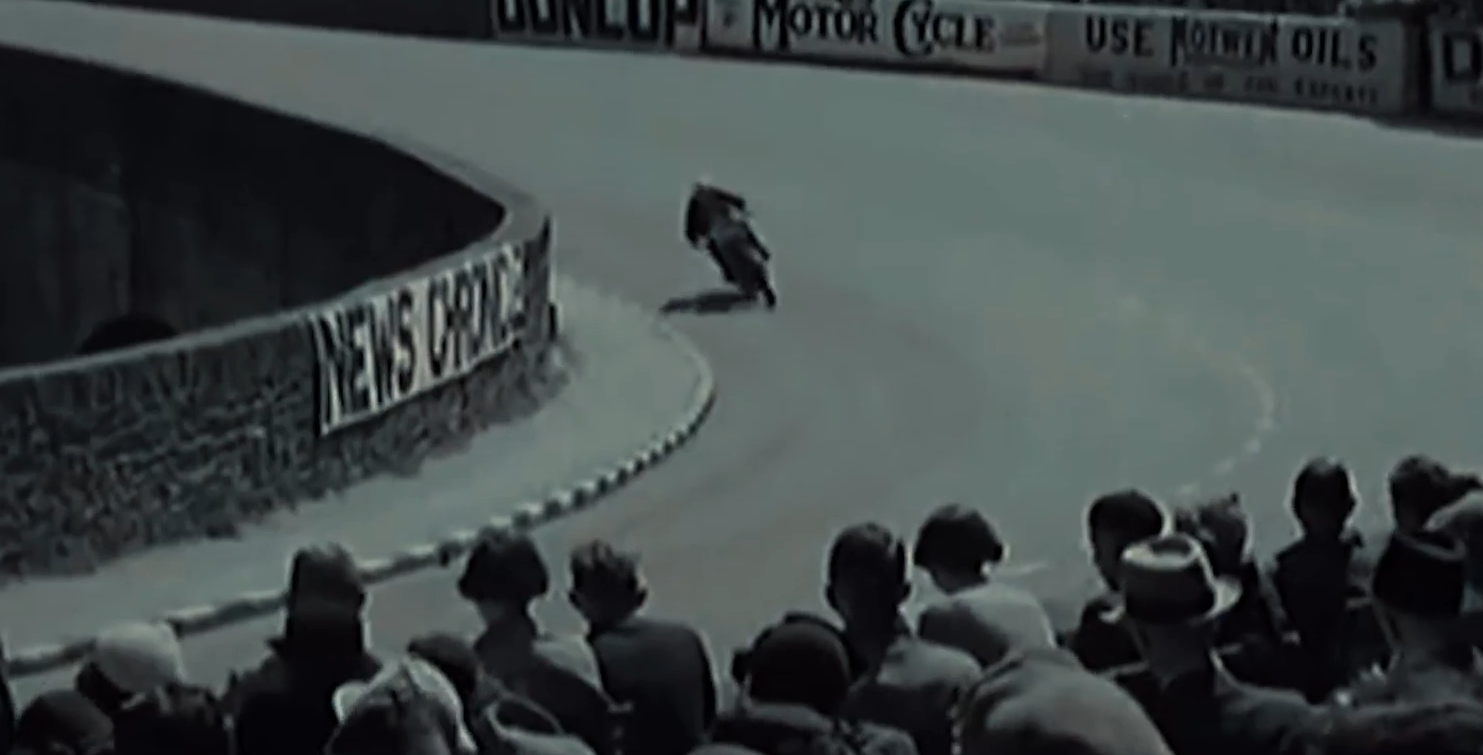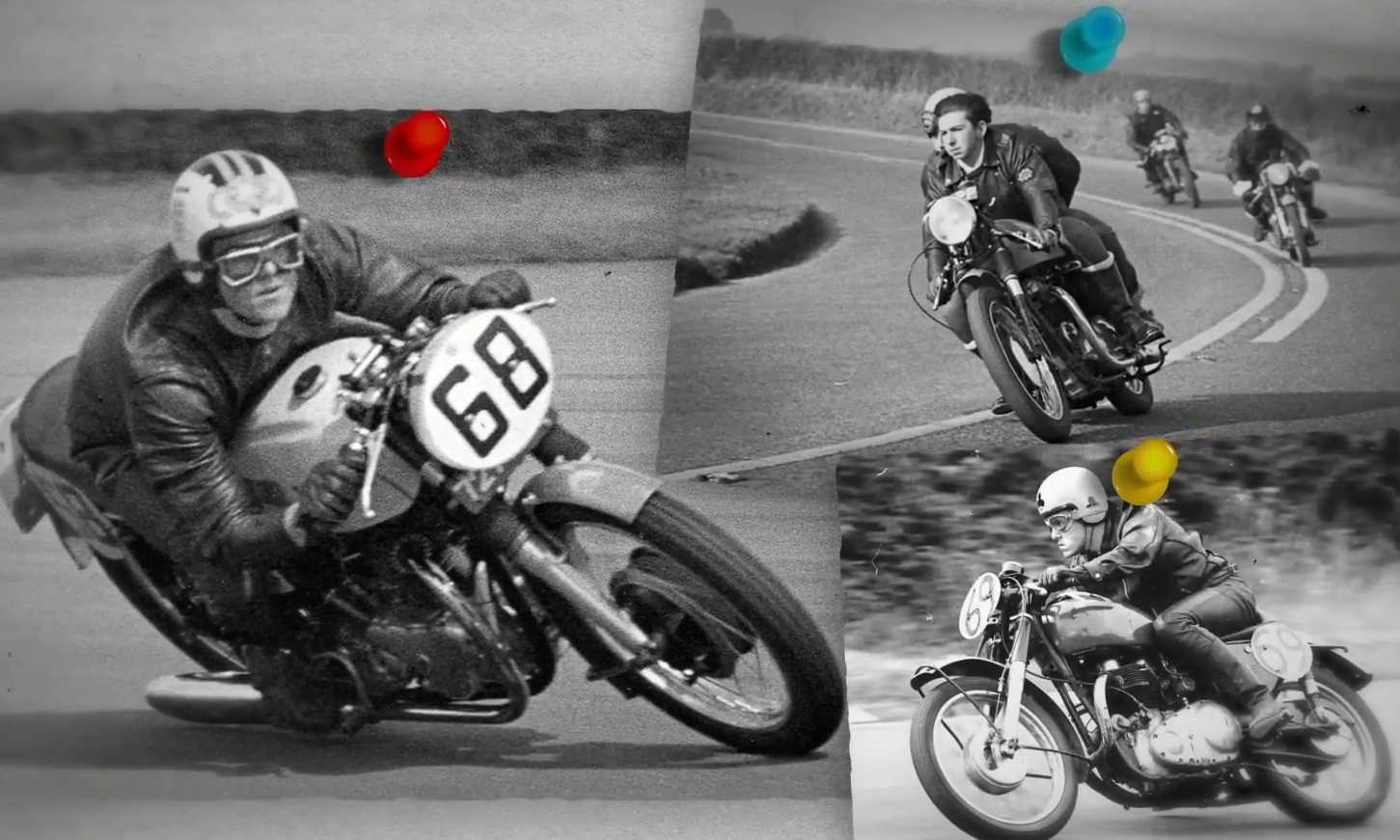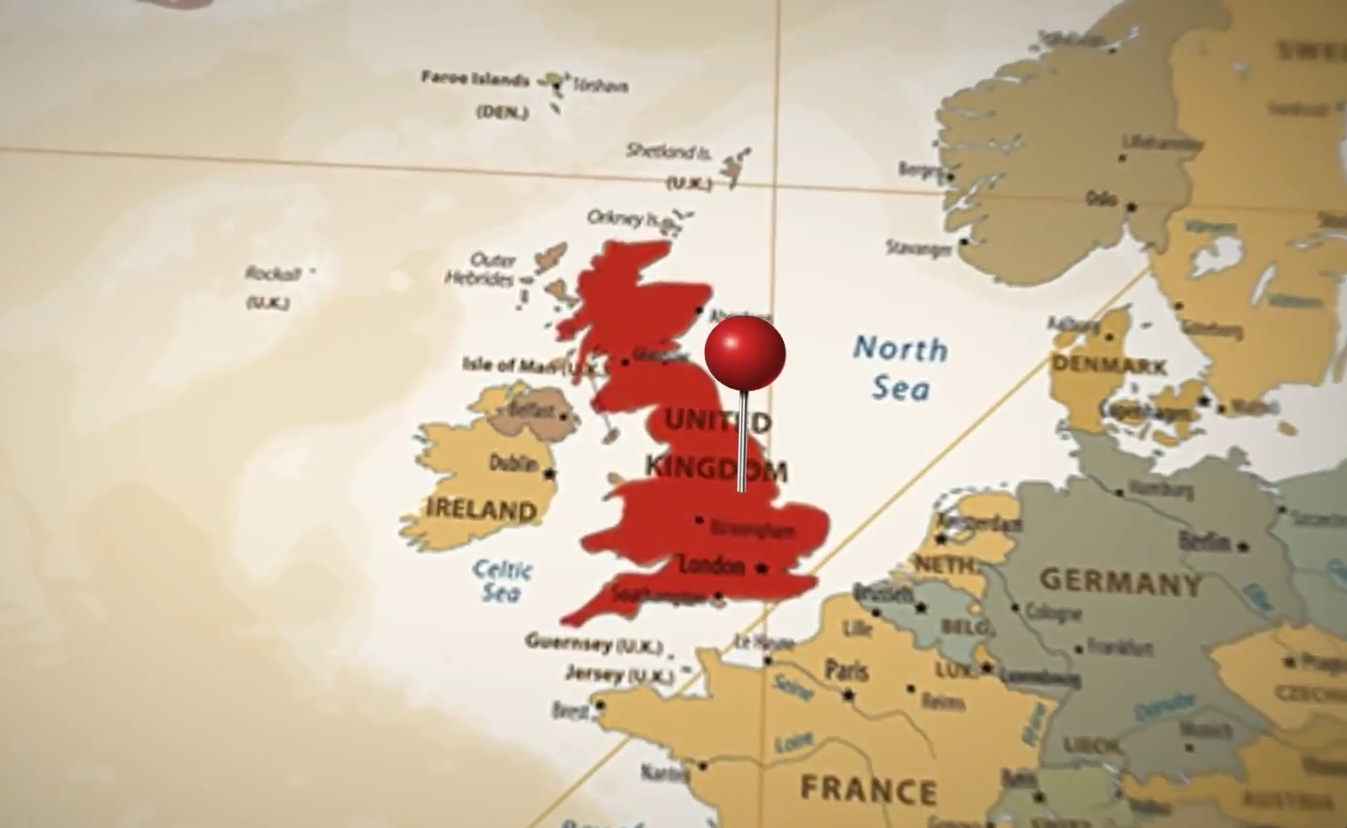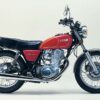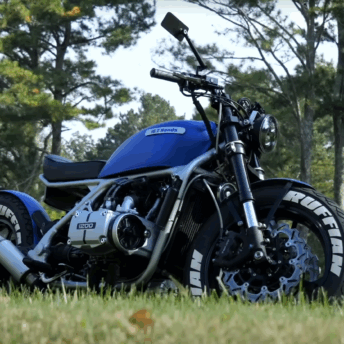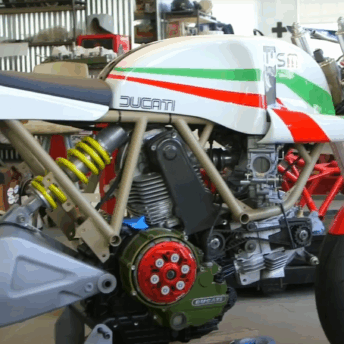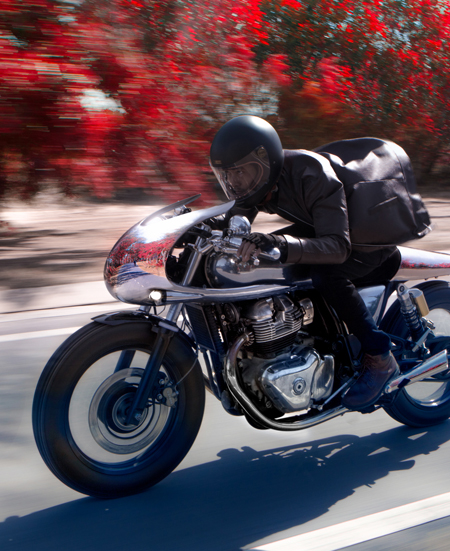The café racer began as a simple idea among British motorcyclists who wanted speed, style, and freedom. In the 1950s and 1960s, riders modified their standard bikes to make them faster and lighter, often gathering at local cafés before racing to the next stop. These stripped-down machines reflected their owners’ creativity and passion for performance rather than loyalty to any one brand.
Over time, the café racer became more than just a custom motorcycle—it grew into a culture. The look, defined by low handlebars, rear-set pegs, and polished metal, spread far beyond the UK. Even decades later, riders around the world still build and ride café racers, keeping that spirit of individuality and speed alive.
Key Takeaways
- The café racer started as a British movement focused on speed and personal style.
- Its design and culture spread worldwide and influenced motorcycle trends for decades.
- Modern riders continue to build café racers as a tribute to their classic roots.
Origins Of The Cafe Racer
Early Development in 1950s–1960s Britain
The cafe racer style began in postwar Britain during the 1950s and 1960s. Riders gathered at roadside cafes, using them as meeting spots before racing to the next one. These short, fast rides shaped the name cafe racer.
Motorcyclists modified their bikes for speed and handling, removing unnecessary parts to make them lighter. They replaced heavy steel tanks with aluminum ones, lowered the handlebars, and moved the foot pegs back for a racing stance. The goal was simple—go faster and look like the racers seen at famous events such as the Isle of Man.
Racing between cafes was more about pride than prizes. Riders competed for respect, not money. This mix of friendly rivalry and shared passion helped form a close community that valued both performance and style.
| Common Modifications | Purpose |
|---|---|
| Lighter fuel tanks | Reduce weight |
| Clip-on handlebars | Improve aerodynamics |
| Rear-set foot pegs | Create racing posture |
| Engine tuning | Increase power |
Role of the British Motorcycle Scene
Britain’s motorcycle industry fueled the cafe racer movement. Companies like Triumph, Norton, and Vincent produced affordable, high-performance bikes that served as perfect starting points for customization.
Enthusiasts often mixed parts from different brands, caring more about results than loyalty to a manufacturer. The culture mirrored American hot-rodding, where creativity and speed mattered most.
As the trend grew, major manufacturers noticed. By the 1970s and 1980s, brands such as Harley-Davidson, Honda, and BMW released factory-built models inspired by the original cafe racers. These bikes carried the same stripped-down look and racing influence that began decades earlier in the cafes of Britain.
Defining The Cafe Racer Style
Key Design Traits
Cafe racers feature a minimalist and purposeful look. Builders remove extra parts to make the bike lighter and faster. The style often includes a long fuel tank, a single seat, and a low, stretched stance. Riders lean forward behind clip-on handlebars, giving the bike a racing posture.
| Feature | Description |
|---|---|
| Fuel Tank | Slim and elongated for a racing profile |
| Seat | Single, often with a rear cowl |
| Handlebars | Low and narrow for better aerodynamics |
| Foot Pegs | Set farther back to create a tucked riding position |
Typical Custom Changes
Owners often modify their bikes to match the look and feel of 1960s British racers. Common changes include:
- Replacing heavy steel parts with lighter aluminum pieces
- Swapping out factory tanks for race-style versions
- Lowering handlebars and repositioning pegs for a sportier stance
These updates create a sleek, stripped-down machine focused on speed and control rather than comfort or decoration.
Engine and Speed Enhancements
Performance mattered as much as looks. Riders upgraded engines to keep up with each other on café runs. They often used:
- Larger carburetors for better airflow
- Freer exhaust systems to boost power
- Engine swaps, sometimes mixing brands, to gain extra horsepower
This approach reflected a do-it-yourself performance culture where individuality and speed defined the spirit of the cafe racer.
The Culture Behind Cafe Racers
Cafes as Meeting Grounds
Cafes in postwar England became the heart of the cafe racer movement. Riders gathered at these spots to share stories, show off their bikes, and plan rides. Each cafe served as a social hub where friendships formed and rivalries grew.
Common hangout traits:
| Feature | Purpose |
|---|---|
| Central location | Easy access for riders |
| Music and jukeboxes | Reflected the rock and roll spirit |
| Open parking areas | Displayed customized bikes |
Bonds Among Riders
The cafe racer scene built strong connections among enthusiasts. Riders valued skill, creativity, and respect more than brand loyalty. Whether someone rode a Triumph, Norton, or a Japanese bike, what mattered was the shared passion for speed and craftsmanship.
They often rode in groups, pushing each other to improve their machines. This sense of teamwork created a lasting community that extended beyond the bikes themselves.
The Spirit of Friendly Competition
Racing from one cafe to another became a test of both rider and machine. These short bursts of speed were not about money or prizes but about pride and acknowledgment. It was a form of gentleman’s racing, where a simple nod between riders showed mutual respect.
This attitude shaped the culture’s identity—fast, fair, and built on honor. Even today, that same spirit continues to define what it means to ride a cafe racer.
Evolution And Global Influence
Influence of Japanese Motorcycles
When Japanese manufacturers entered the market in the 1970s, they changed how riders built and viewed café racers. Their bikes offered strong engines, reliable performance, and affordable prices. Builders began using models from Honda, Yamaha, and Kawasaki as new bases for custom café projects. These motorcycles allowed more people to join the movement, expanding it beyond British brands.
| Decade | Common Café Racer Base | Notable Feature |
|---|---|---|
| 1960s | Triumph, Norton, Vincent | Classic British styling |
| 1970s | Honda CB series | High performance and easy tuning |
| 1980s | Yamaha, Kawasaki | Modern reliability with vintage appeal |
Factory-Built Café Models
As enthusiasm grew, major manufacturers started releasing ready-made versions of the style. These factory café racers offered the look and stance of custom builds without the need for modification. Examples included the Harley-Davidson XLCR and Honda GB500 TT. Later, companies like BMW and Moto Guzzi followed with their own interpretations.
- Purpose: Capture the café racer spirit in a production model
- Design Traits: Low handlebars, rear-set foot pegs, and lightweight frames
- Market Impact: Made the style accessible to riders who wanted performance with heritage
Shifting Trends Over the Years
By the 1980s and 1990s, the café racer trend slowed as new motorcycle styles gained attention. The rock and roll image that once fueled the scene faded, but the bikes’ design and culture remained admired. In recent years, interest has returned as riders look back to classic builds for inspiration.
Today, both custom builders and major brands continue to produce café racer–style motorcycles. The mix of nostalgia, simplicity, and speed-focused design keeps the legacy alive across generations and continents.
Cafe Racers In Modern Times


Modern Builders and Riders
Today, riders all over the world still build and ride cafe racers. They mix old-school looks with modern parts and technology. Many use lighter frames, custom tanks, and low handlebars to keep the classic stance.
Popular choices for builds:
| Base Model | Country | Notable Feature |
|---|---|---|
| Triumph Bonneville | UK | Retro styling with modern reliability |
| Honda CB Series | Japan | Easy to modify and affordable |
| BMW R NineT | Germany | Factory cafe racer design |
Enthusiasts often share their builds online, trade parts, and gather at events to celebrate the culture. The focus remains on personal expression and performance rather than brand loyalty.
Ongoing Influence in Motorcycle Design
Manufacturers continue to draw from cafe racer design. Brands like Ducati, Royal Enfield, and Yamaha release models that echo the stripped-down, racing-inspired look of the 1960s.
Modern factory versions often include:
- Clip-on handlebars
- Slim fuel tanks
- Rear-set foot pegs
- Minimalist lighting and bodywork
These design cues connect today’s motorcycles to their historic roots. Even as trends shift, the cafe racer’s clean lines and focus on speed remain a lasting influence on motorcycle design.
Conclusion
Cafe racers continue to capture attention decades after their rise in the mid-20th century. Their distinct mix of speed, style, and individual craftsmanship keeps them relevant among both classic and modern riders.
Builders today still follow the same core ideas—lightweight frames, low handlebars, and racing-inspired designs—that defined the originals. Many major brands now offer factory-built versions, showing how deeply this culture has influenced motorcycle design.
| Era | Key Development | Example |
|---|---|---|
| 1950s–1960s | British riders modify bikes for speed | Triumph, Norton |
| 1970s | Japanese models join the scene | Honda, Yamaha |
| 1980s–1990s | Manufacturers release ready-made café racers | Harley-Davidson XLCR |
| Today | Ongoing custom builds and modern tributes | BMW, Moto Guzzi |
The spirit behind these machines remains one of personal expression, friendly rivalry, and shared enthusiasm for the ride itself.
